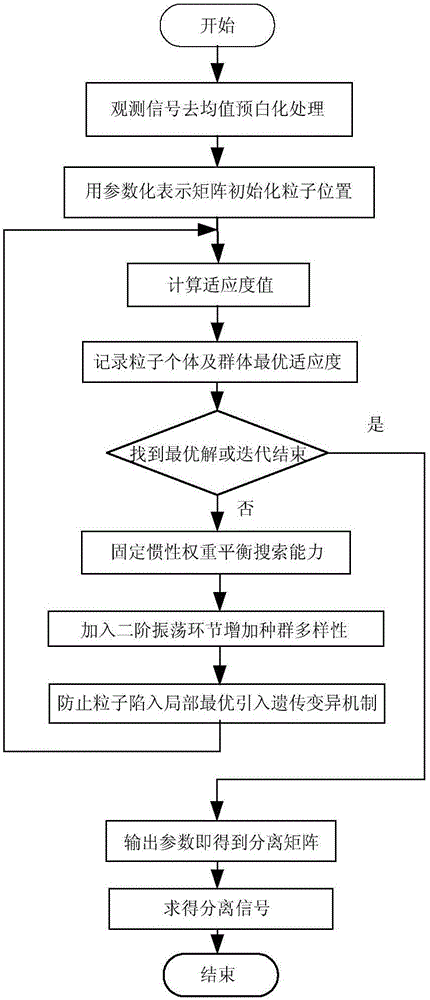Two-order oscillation particle swarm blind source separation method based on heritable variation optimization
A technology of blind source separation and genetic variation, applied in the field of blind separation of unknown mixed signals, can solve the problems of slow convergence speed, unknown source signal and channel properties, affecting separation effect, etc., so as to improve separation performance and overcome nonlinear activation functions. Choose the effect of the puzzle
- Summary
- Abstract
- Description
- Claims
- Application Information
AI Technical Summary
Problems solved by technology
Method used
Image
Examples
Embodiment Construction
[0016] The implementation of the present invention will be further described below in conjunction with the accompanying drawings and specific examples.
[0017] figure 1 A simplified mathematical model of the blind source separation algorithm is given. It can be seen that the key to the blind source separation algorithm is to obtain a process of determining the separation matrix W through the corresponding algorithm, that is, the inverse matrix of the mixing matrix A. The impact of noise on the algorithm is not considered in the simplified model. After adding noise, it can be expressed as:
[0018] y(t)=Wx(t)=WAs(t)+Wn(t) (1)
[0019] The separated signal y(t) is an estimate of the source signal s(t). Usually, the effect of additive noise n(t) is ignored. Thus y(t)=WAs(t). Since both the source signal and the transmission channel characteristics are unknown, y(t) has randomness in magnitude and order, which is called the ambiguity of blind source separation. Wx(t)=WAs(t)...
PUM
 Login to View More
Login to View More Abstract
Description
Claims
Application Information
 Login to View More
Login to View More - R&D
- Intellectual Property
- Life Sciences
- Materials
- Tech Scout
- Unparalleled Data Quality
- Higher Quality Content
- 60% Fewer Hallucinations
Browse by: Latest US Patents, China's latest patents, Technical Efficacy Thesaurus, Application Domain, Technology Topic, Popular Technical Reports.
© 2025 PatSnap. All rights reserved.Legal|Privacy policy|Modern Slavery Act Transparency Statement|Sitemap|About US| Contact US: help@patsnap.com



